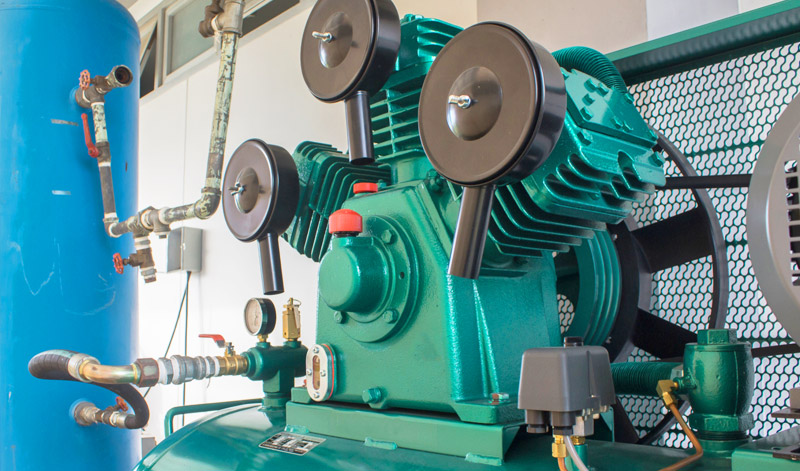
Understanding Different Types of Compressed Air Dryers
Compressed air is often called the fourth utility — along with water, electricity and natural gas. This is because so many business and industries rely on compressed air for their daily operations.
The act of compressing air raises the air temperature and lowers the relative humidity, which allows it to accommodate a large amount of water vapor. This water content needs to be removed to various degrees, however. Too much moisture can cause rust and corrosion and affect the quality of compressed air.
Moisture removal can be accomplished via condensation, adsorption and selective permeation processes. There are three major types of air dryers that use these processes — refrigerated, desiccant and membrane.
Refrigerated dryers
In a refrigerated dryer, a direct exchange compression-expansion process cools refrigerant, which conducts heat from hot moist air until water condenses out of the air. The hot moist air from the compressor enters the dryer and encounters an air-to-refrigerant heat exchanger, which lowers the air temperature to just above freezing. The condensate is removed from the air in a moisture separator. The cool dry air then exits the dryer through an air-to-air heat exchanger which pre-cools the hot incoming air and raises the temperature of the cold supply air.
Refrigerated systems have a relatively limited dew point temperature in the range of 35°F to 50°F. The power requirement of refrigerated dryers is relatively low at roughly 0.8 kW/100 cfm. Higher inlet pressures and lower inlet air temperatures increase the dryer flow rating.
Desiccant dryers
Desiccant air dryers remove moisture by adsorption. The desiccant material includes silica gel, activated alumina and molecular sieves. As air passes through the desiccant beads, water vapor is stripped from the air and clings to the surface of the beads. This produces very dry compressed air with very low dew points of -40°F to -100°F. After a period of time, a small portion of dried, compressed air is used to purge and regenerate the wet beads. The wet purge air vented to atmosphere is lost air, which is expensive.
A heatless desiccant dryer (heat of compression) uses 15% to 18% of the dried air for regeneration and draws about 0.8 kW/100 cfm. Heat of compression is almost exclusively used with centrifugal or lubricant-free rotary screw compressors. A heated desiccant dryer uses 3% to 7% of the dried compressed air for regeneration and draws about 2 to 3 kW/100 cfm. The addition of an ambient air blower reduces the purge air requirement. An intake coalescing filter is required to remove oil from supply air.
Membrane dryers
When used as a dryer in a compressed air system, specially designed hollow polymer fibers allow water vapor to pass through the fiber wall membrane pores faster than the air. This reduces the amount of water vapor in the air stream, thereby suppressing the supply air dew point. The dew point achieved is usually 40°F but lower dew points to –40°F can be achieved at the expense of additional purge (sweep) air loss.
Roughly 15% to 20% of dry compressed air is required for purging in membrane systems. Sweep air actual use is directly proportional to the amount of flow through the dryer. The power requirement is relatively high at 3 to 4 kW/100 cfm. However, membrane dryers have no moving parts to wear out, making them easier and less expensive to maintain.

Operational factors to consider
Refrigerant and desiccant dryer systems work best in combination with each other. A desiccant or membrane dryer is best used as a finishing dryer downstream from a refrigerated dryer. Refrigerated dryers are best for high temperature environments, although they have a limited dew point temperature.
Any dryer using desiccant or membranes should be protected from contaminants by using a coalescing filter and particulate filter at the intake. Membrane dryers have a relatively lower capacity than the other types. Desiccant heat of compression dryers and refrigerant dryers use the least amount of electricity.